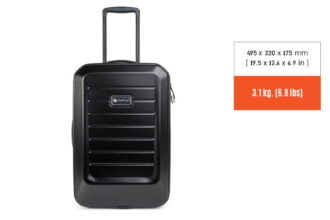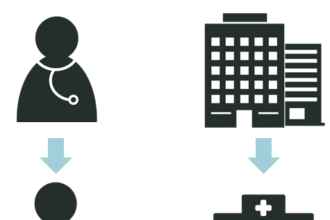This is the transcript of my recent podcast interview with Stuart Long, president of North America for Capsule.
This is the transcript of my recent podcast interview with Stuart Long, president of North America for Capsule.
David Williams: This David Williams, co-founder of MedPharma Partners and author of the Health Business Blog. I’m speaking today with Stuart Long, Capsule’s North American President. Stuart, thanks for being with me today.
Staurt Long: Thanks David. Glad to be here.
Williams: Stuart, tell me a little bit about what Capsule is and specifically what you mean by the term “medical device connectivity.”
Long: Capsule is a 15 year old international company. We provide solutions for medical device integration into hospitals and clinics. We were founded on the understanding that the electronic medical record would ultimately need automation with respect to medical device data.
What we mean by medical device integration –and why it’s important– is the fact that medical devices such as cardiac monitors, IV balloon pumps, and ventilators all produce data that comes directly from a patient, generally at the point of care. Given the Meaningful Use criteria and a lot of inertia in the environment with respect to the adoption of clinical systems and automation that surrounds all the elements, that information is important.
The data then has to land in a solution; it’s part of the EMR. The typical destination for us today is the charting and documentation system, which can be in the intensive care unit or the medical and surgical environments.
Capsule takes the data that comes from those medical devices and translates that in a particular way using HL7. Then we send that information to the target system.
We can send the information to additional target systems such as third party research engines, alarms and alerts and other IT systems.
Williams: Who is usually the customer that is initially interested in Capsule? Who is typically the decision-maker?
Long: Today typically it’s a hospital. We do have customers in the clinics as well, but the groundswell with respect to automation and having unique, enterprise-wide identifiers comes mainly from hospitals.
I’ll give you a little context. Historically we sold departmental solutions, namely ICUs. The audience that was buying those was typically the biomedical engineering departments; they were putting a black box under the bed, connecting monitors and putting that information into an ICU charting and documentation system.
That has evolved now. We can address not just the ICU, but also multiple high acuity environments such as PACUs and EDs as well as lower acuity areas such as medical and surgical environments. By doing that, the buying audience is now completely different.
The audience that’s making decisions with us today is typically the CIO, the CNO and the CMIO. They are choosing this because it’s an enterprise-wide decision. They’re look for a single platform for connectivity of medical devices and then the ability for that system to translate and push that to any target system.
Williams: I imagine 15 years ago when this started, there was a different philosophy towards getting data out of these devices. Probably the nature and quantity of the data have changed, too
Long: Capsule was founded by a French engineer and a U.S. engineer. Initially they developed a solution for Philips Healthcare to integrate their vital signs monitors into their ICU application. Of course all that information was definitely very important and there was, at the time, a lot of data.
Ultimately there was the need for more than just ICU monitors connected at the bedside. That progressed next to ventilators and then to IV pumps and balloon pumps –anywhere from three to five to 10 devices at the bedside.
Over time Capsule developed solutions to allow all those devices to be connected. At the very core of the thinking was that we knew that there would be mountains of data that would be coming from these devices.
Interestingly enough, in the early days when connectivity needs were evolving, any device that would send information to any target system, all of that information could not be assimilated or taken in. There was a challenge around the rate at which data could be taken in.
Fast forward to today’s world where we have multiple devices. We have to deal with the sheer complexity of devices, networking, subnets and wireless. The complexity and connectivity is significant, but also the sheer amount of data.
Capsule takes all of that information –100% of that information at whatever speed or time interval that the devices are able to send out– collects it, aggregates it, filters it, translates it, and then sends it to a target system, which could be an EMR charting application or alarms and alerts.
We’re seeing a big growth in research systems for data analytics for the measurement of information for doing research on health care data outcomes.
Because of our ability to have the intelligence in the system, we can really tune the system to meet any needs in today’s health care environment, whether it’s a single ICU application, an enterprise-wide deployment of an EMR or any third party system that can receive the data at whatever rate they want us to send it to them.
Williams: When you have more information available, does it raise medical/legal issues? Before this data might have been used to trigger an alarm, which may or may not have been documented. But in a system like what you’re describing it might be easier for someone to go back and second guess what happened in the hospital because there’s a lot more data on what occurred or at least what the devices were saying was occurring. Is that an issue that you’ve come up against?
Long: It’s not an issue from our perspective. Typically when we’re sending information to an EMR charting system or some third party component, the data that’s being requested has been tuned specifically for their application. Therefore those vendors have worked out the kinds of data that are most appropriate, so that they’re not overburdened.
Williams: What about security? Certainly with a lot of other devices that are out there transmitting data, there are concerns about hackers, viruses and the like. Is that an issue that you face either directly or indirectly?
Long: Well it’s certainly a topic we face on a day-to-day basis. I wouldn’t consider it an issue at this point only because of the way that we’ve architected the system. It’s highly flexible with respect to the security that’s built into the systems. We can accommodate a small single hospital with a smaller staffed IT department that is really focused on getting systems deployed. Although security is important, it certainly may differ from a 160 hospital enterprise deployment with very sophisticated networks.
We’ve been able to fit our solution into virtually any environment with respect to security needs and built a tremendous amount of security into the system.
We’re regulated as a FDA Class II medical device, so there is rigor that goes into our testing, validation, and quality. That ultimately points to safety at the point of care.
The combined efforts of our focus around security being scalable and flexible and our FDA compliance tends to alleviate most of the concerns that we come across.
Williams: Tell about your activities in countries outside of the U.S. and whether there are any key differences or whether the customers and markets are pretty similar.
Long: We’re in over 30 countries. The bulk of our business is in the U.S., however we’re growing rapidly in international markets. We do see a fundamental difference with respect to health care in the U.S. versus other global regions. They all require different go-to-market strategies and types of products. The speed at which they might deploy and the environments of how health care is actually provided and managed are quite a bit different as well.
I think it’s a strong proof statement that Capsule is the global leader in medical device connectivity. We’ve deployed in excess of 200 implementations outside of the U.S. That’s growing rapidly because device connectivity and electronic systems are maturing quite a bit in overseas markets. I think they are equally sophisticated as the U.S., but I would say that the drivers to require the adoption of electronic systems that would then remove the rate limiting factor for device integration are greater in the U.S. So we’re seeing a faster deployment here in the U.S.
Williams: Take out your crystal ball for a minute and have a look into the future five years or so. Are we likely to see continued incremental changes that we’ve witnessed over the last several years or are things like iPads, smartphones, Meaningful Use and changes to the payment system in the U.S. and elsewhere going to cause more fundamental change?
Long: If we look at a three to five year timeline, connectivity is very quickly moving beyond the basics of device connections to electronic systems. We still believe that there is a very large percentage of hospitals that need to implement the basic device connectivity.
A lot of our customers are going department by department. We see that moving into what we call the “enterprise,” meaning they’ll be addressing both the higher and the lower acuities or every bed in their institution.
We still see a fairly large demand for the foreseeable future; within the next three to five years.
Once those are implemented the things that are on the horizon are the sophistication around the devices themselves and how to solve connectivity. We know that the integration of pumps is going to have to be solved in a very meaningful way because of their ability to integrate into bar code medication administration.
Beyond that there is a lot of desire and discussion about device interoperability and two-way communication between devices and there’s a tremendous amount that needs to be solved with respect to clinic workflows and having devices interoperate. Those are portions of the criteria that we see in the Meaningful Use rules out in 2015.
We know that once all of these things come together and the basic needs are met, we have the ability to look at larger things within clinical workflows and the management of all the data that is being collected for analytics and outcomes. We have the ability to progress from alarms and alerts to build intelligence and context into that information and to disseminate that information to mobile health care providers. This can be done not just at the point of care but also through iPads, smartphones and potentially other third party vendors that are enabling those markets.
We see “small leap frogs” coming every 24 months or so, which are significant changes with the use of the data that’s being collected and moving well beyond the basics of connectivity.
Williams: I’ve been speaking today with Stuart Long, Capsule North American President. We’ve been talking about medical device connectivity. Stuart, thanks so much for your time.
Long: Happy to do it.






